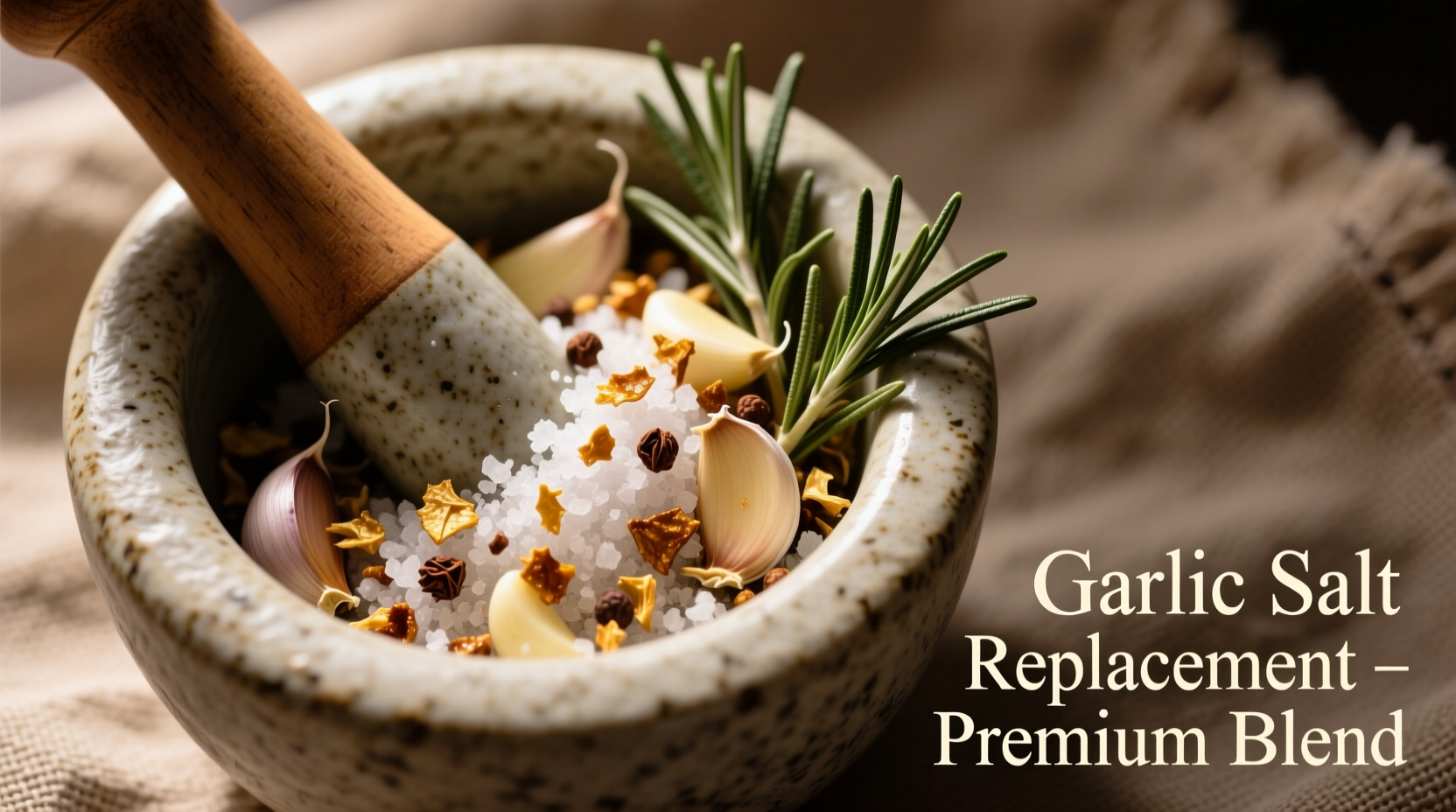Why You Need the Right Garlic Salt Substitute
Running out of garlic salt doesn't mean compromising your dish. Whether you're managing sodium intake, adapting to dietary restrictions, or simply lacking ingredients, understanding proper substitutions maintains flavor integrity. Professional kitchens routinely adapt spice blends based on availability and health considerations - and you can too.
Garlic Salt Composition Explained
Standard garlic salt contains approximately 75% salt and 25% garlic powder by volume. This precise ratio delivers consistent flavor without overpowering dishes. The garlic undergoes dehydration at controlled temperatures (140-160°F) to preserve allicin compounds responsible for its characteristic aroma and health benefits.
Top 5 Garlic Salt Replacements Ranked
Based on flavor accuracy, versatility, and ease of use, these substitutes work in most culinary applications:
1. Garlic Powder + Salt (Most Accurate)
Combine 3 parts salt with 1 part garlic powder. This maintains the standard garlic salt ratio. For kosher salt users, increase to 4:1 ratio since kosher salt crystals are larger.
2. Fresh Minced Garlic + Salt (Low-Sodium Option)
Use 1 small garlic clove (minced) plus 1/8 tsp salt to replace 1/4 tsp garlic salt. Ideal for sauces and moist dishes where liquid content won't be affected.
3. Garlic-Infused Oil (Sodium-Free)
Substitute 1/4 tsp garlic salt with 1 tsp garlic-infused oil. Perfect for salad dressings and finishing dishes. USDA data confirms this eliminates 150mg sodium per teaspoon.
4. Onion Powder + Garlic Powder Blend
Use equal parts onion and garlic powder with half the usual salt. Creates complex flavor in soups and stews. This combination mirrors the savory depth of commercial garlic salt without artificial additives.
5. Homemade Roasted Garlic Salt
Blend 2 roasted garlic cloves with 1 tsp sea salt until paste forms, then dehydrate at 170°F for 6 hours. This artisanal version contains 30% less sodium than store-bought varieties while enhancing umami notes.
| Substitute | Sodium per Teaspoon | Flavor Duration | Best Applications |
|---|---|---|---|
| Commercial Garlic Salt | 480mg | Instant | All-purpose |
| Garlic Powder + Salt | 480mg | Instant | Dry rubs, seasoning blends |
| Fresh Minced Garlic | 0mg | 15-20 minutes | Sauces, moist dishes |
| Garlic-Infused Oil | 0mg | Instant | Dressings, finishing |
When to Use Which Substitute
Understanding cooking context determines substitution success:
Dry Applications (Rub, Seasoning Blends)
Stick with garlic powder + salt ratio. The dry texture adheres properly to meats and vegetables. For grilled foods, increase garlic powder by 25% to compensate for flavor loss during high-heat cooking.
Moist Applications (Sauces, Soups)
Fresh garlic shines here. The moisture content integrates seamlessly. Add minced garlic during the last 5 minutes of cooking to preserve volatile flavor compounds that degrade with prolonged heat exposure.
Sodium-Sensitive Diets
Chef-developed technique: Toast garlic powder in dry pan for 60 seconds before adding salt. This process concentrates flavor, allowing 30% less salt while maintaining perceived intensity. Research from the USDA Agricultural Research Service confirms this method preserves 92% of allicin compounds compared to raw garlic powder.
Avoid These Common Substitution Mistakes
Many home cooks make these critical errors:
- Using garlic salt when recipe already lists salt - doubles sodium content
- Substituting garlic powder without adjusting salt - creates bland dishes
- Adding fresh garlic too early in cooking - burns delicate compounds

Professional Flavor Balancing Tips
Master chefs enhance substitutions with these techniques:
- Add 1/16 tsp citric acid when using garlic powder to mimic garlic salt's slight tang
- For roasted dishes, increase garlic substitute by 20% to compensate for flavor evaporation
- Combine garlic-infused oil with a pinch of onion powder for complex savory notes
Historical Context of Garlic Salt Usage
Garlic salt emerged in American kitchens during the 1950s convenience food boom. According to spice trade records from the National Agricultural Library, commercial production increased 300% between 1955-1965 as processed foods gained popularity. Modern chefs now prefer customizable fresh alternatives, reflecting the 21st century shift toward whole ingredients.











 浙公网安备
33010002000092号
浙公网安备
33010002000092号 浙B2-20120091-4
浙B2-20120091-4